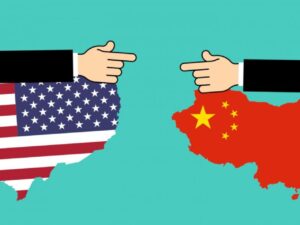If you’re looking to get into the world of trading, CFDs might be just what you need. CFD trading, or contract for difference, trading is a popular way to invest in the market. It allows you to trade on the price of assets without actually having to own them. This can be a great way to make profits on short-term price movements. We will discuss what CFD trading is and how you can get started.
What is CDF trading?
This terminology might sound confusing, but actually, CFD trading is a way to speculate on the prices of financial assets, like stocks or ETFs. With CFD trading, you don’t truly own the underlying market, but you can still make money if the price goes up or down.
When you trade a CFD, you are buying a contract that gives you the same exposure as if you had bought the asset it tracks. You are not investing in the market; you are buying this contract that lets you exchange the difference in an asset’s price over time, from when you open your position until when you close it.
The difference between CFD and other types of investments is that if the market moves against you, you have to pay your provider that difference. On the other hand, if you make a profit, your provider agrees to pay you the amount that a market has moved in your favor. So, if in regular investing, the profit was $5000, it would be the same with CFD, but you would make transactions with your provider instead of selling to the market.
You may wonder, what’s the point to choose CDF if you wouldn’t own any financial markets, but you will still pay and earn the same? The answer is that CFDs offer extra functionality and flexibility that you won’t find with other investments.
CDFs key features
Choose between going short or long
What does this mean? If you think the market is going to fall, you can open a short position. This means that if the price does drop, your profit will increase. On the other hand, if you think the market is going to rise, you can go long. So, your profit will grow as the market value of the asset increases.
Put simply, if you think an asset’s price is about to drop, selling it as a CFD could help you make money from the bear market. If prices go up instead, you will lose money.
No need to wait until an asset matures
This is different from investing in stocks, for example. With stocks, you have to wait until the company pays dividends or until you sell it at a higher price than what you paid for it initially. With CFDs, on the other hand, once you make a trade, it is settled immediately. You don’t have to wait for anything.
Leveraged trading
When you invest in CDFs, you don’t have to use all your available capital at once. You can give a deposit (known as a margin) equal to 5% or 10% of the position’s cost instead. This allows you to speculate on price movements with less money than if you were buying the asset outright, and also gives you more flexibility when deciding when to enter and exit trades.
Diversify your exposure
With CFDs, you can also get exposure to assets that would be difficult or impossible to buy directly. For example, you can trade on the price of crude oil without having to physically own any barrels of oil. You can also use CFDs to trade indices, such as the S&P 500 or the Dow Jones Industrial Average. These are baskets of stocks that track how a particular market is performing. Trading indices with CFDs let you take a view of an entire market rather than just individual stocks.
It’s important to remember that with CFDs, you can lose money if the market moves against you. Before trading, make sure you understand how these products work and whether they are suitable for you.
Tips to start trading CFDs
Consider provider options
The first step to trading CFDs is finding a provider. Make sure to shop around and compare different providers to find the best deal. You will also want to consider things like the fees charged, the range of markets available, and whether you need a platform that is easy to use or one with more advanced features. Some providers also offer demo accounts. This is a great way to practice trading without risking any real money.
Start with a small number of markets
CFD trading markets are huge, but if you are a beginner is better to pick a small number of markets that you already know and understand. Once you begin getting more practice, you can start to diversify a bit more.
Attach a stop
You don’t have to keep track of every open opportunity. Traders who are successful and experienced use a stop when they establish a position. Stop-loss orders assist you in managing your risk by closing a position if it reaches a certain level of loss as soon as feasible.
Bottom line
CFDs are a versatile way to trade on the prices of financial assets without owning the underlying asset. You can go long or short, and you don’t have to wait for the asset to mature. CFDs also offer leveraged trading, which means you can trade with less money than if you were buying the asset outright. However, it’s important to remember that with CFDs you can lose money if the market moves against you. Before trading, ensure you understand how these products work and whether they suit you.





